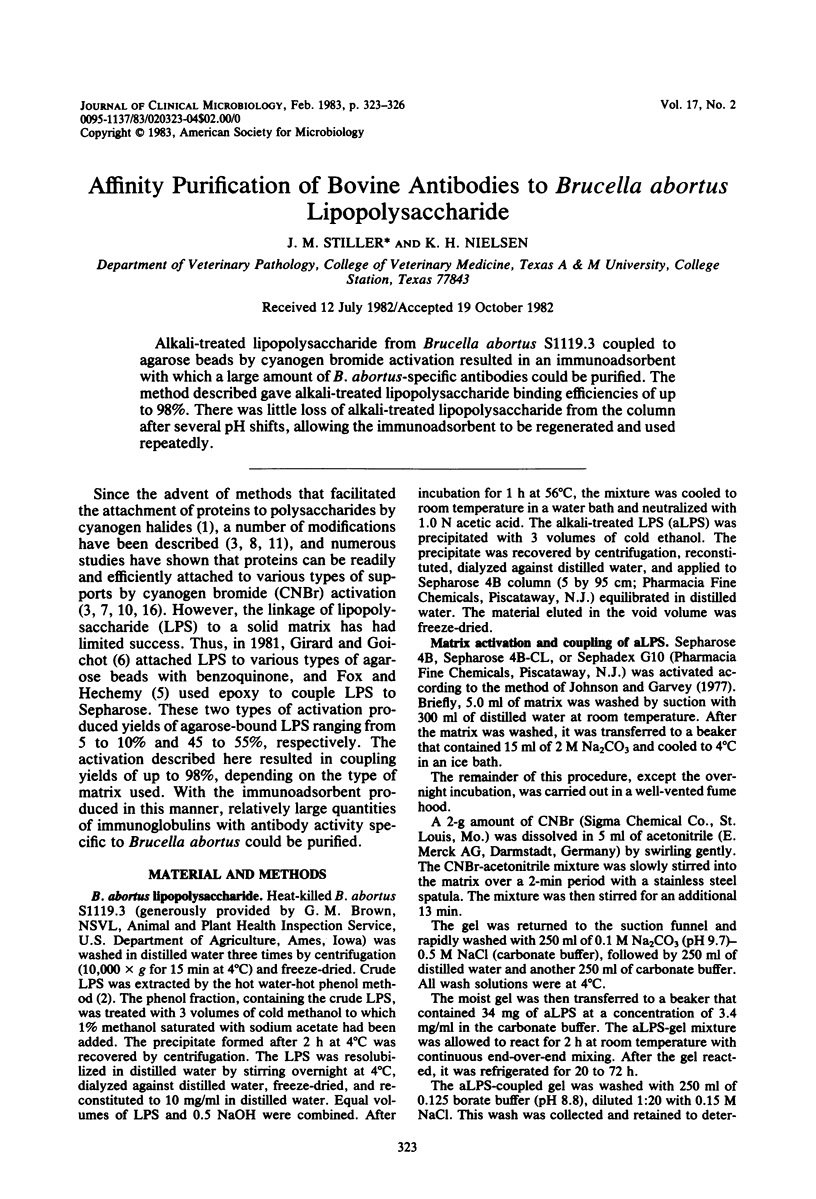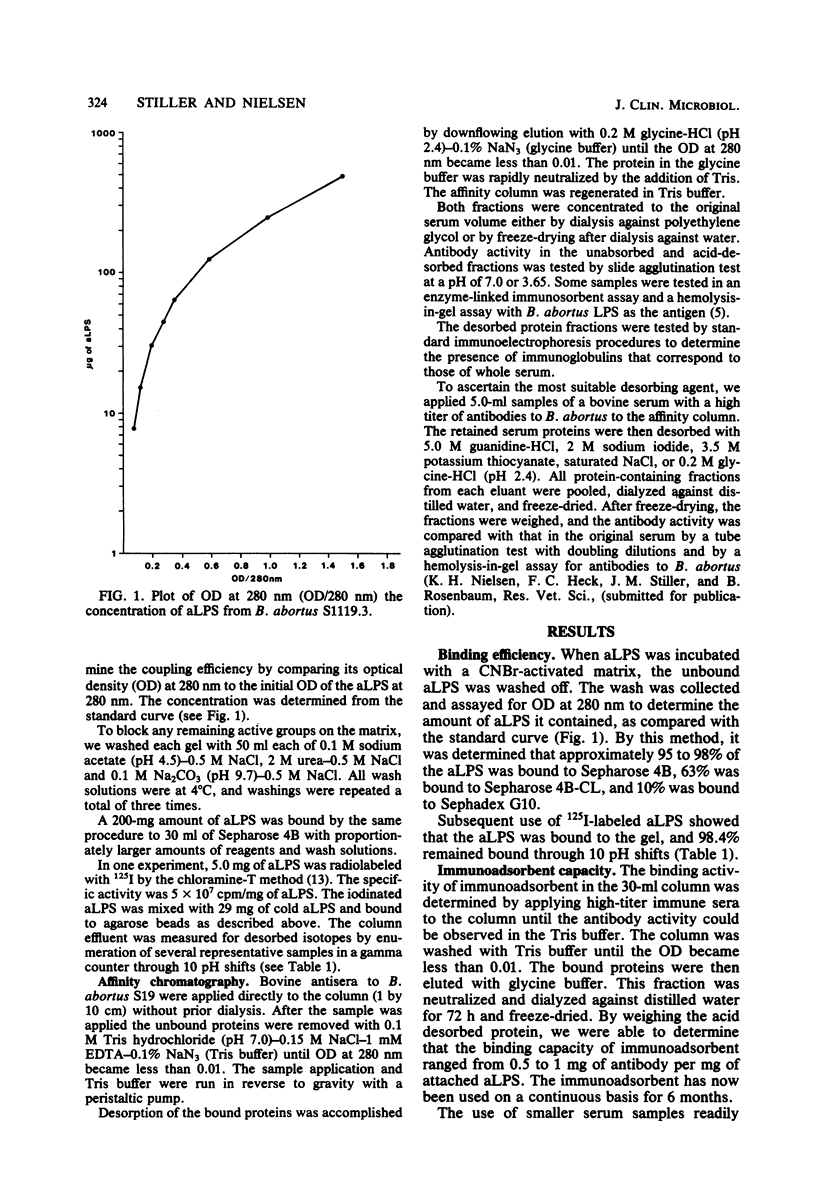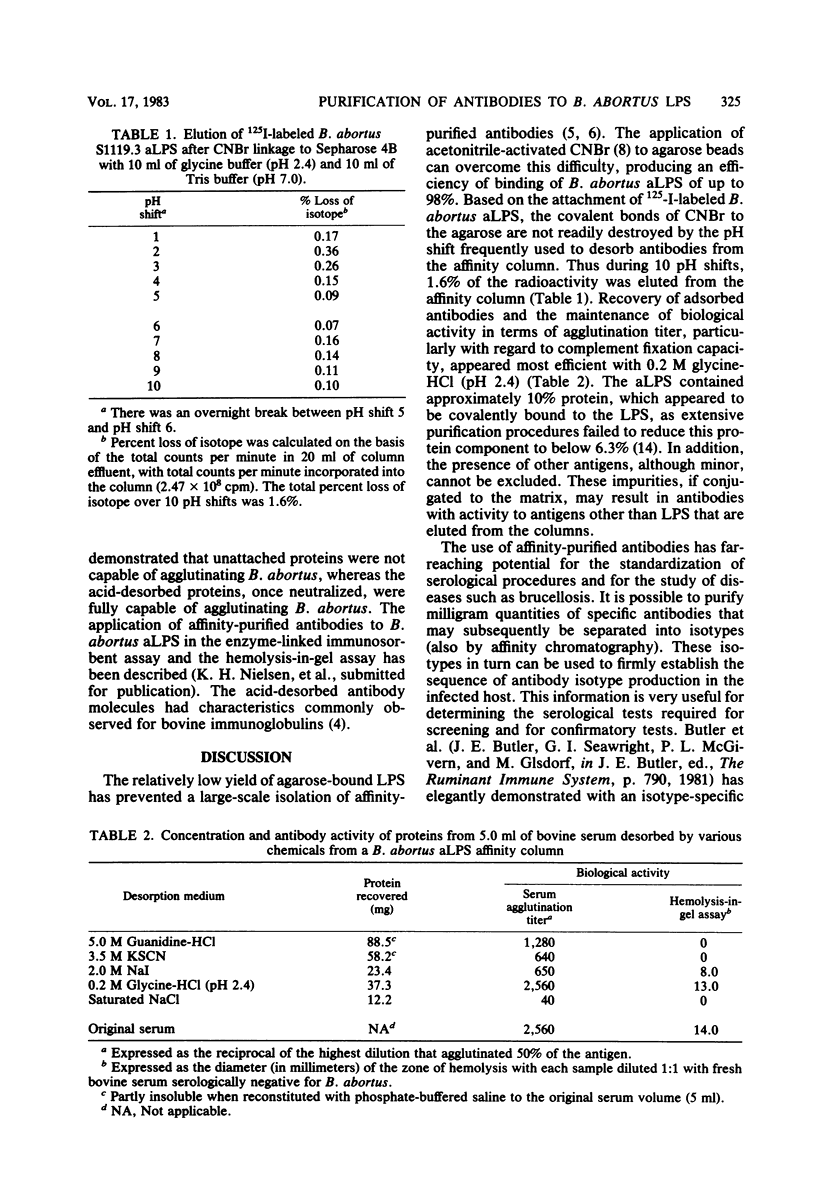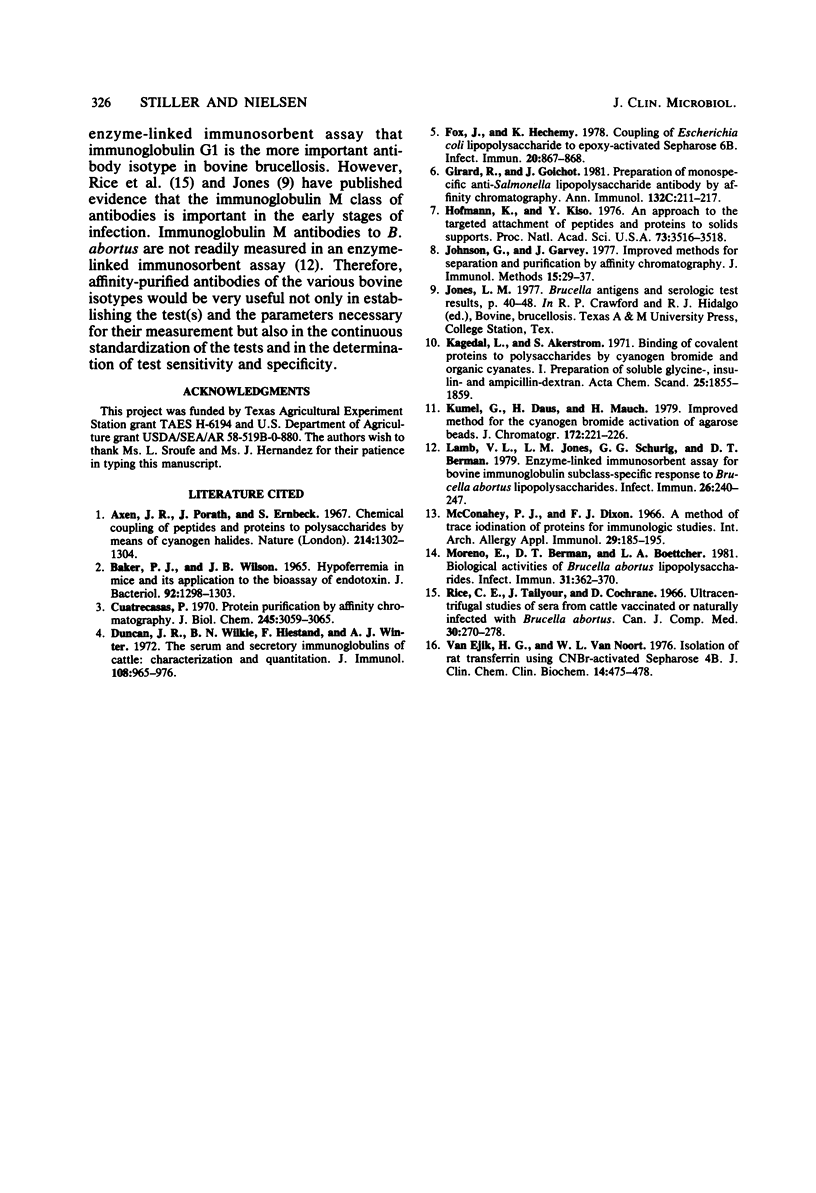Abstract
Alkali-treated lipopolysaccharide from Brucella abortus S1119.3 coupled to agarose beads by cyanogen bromide activation resulted in an immunoadsorbent with which a large amount of B. abortus-specific antibodies could be purified. The method described gave alkali-treated lipopolysaccharide binding efficiencies of up to 98%. There was little loss of alkali-treated lipopolysaccharide from the column after several pH shifts, allowing the immunoadsorbent to be regenerated and used repeatedly.
Full text
PDF



Selected References
These references are in PubMed. This may not be the complete list of references from this article.
- Axén R., Porath J., Ernback S. Chemical coupling of peptides and proteins to polysaccharides by means of cyanogen halides. Nature. 1967 Jun 24;214(5095):1302–1304. doi: 10.1038/2141302a0. [DOI] [PubMed] [Google Scholar]
- Cuatrecasas P. Protein purification by affinity chromatography. Derivatizations of agarose and polyacrylamide beads. J Biol Chem. 1970 Jun;245(12):3059–3065. [PubMed] [Google Scholar]
- Duncan J. R., Wilkie B. N., Hiestand F., Winter A. J. The serum and secretory immunoglobulins of cattle: characterization and quantitation. J Immunol. 1972 Apr;108(4):965–976. [PubMed] [Google Scholar]
- Fox J., Hechemy K. Coupling of Escherichia coli lipopolysaccharide to epoxy-activated Sepharose 6B. Infect Immun. 1978 Jun;20(3):867–868. doi: 10.1128/iai.20.3.867-868.1978. [DOI] [PMC free article] [PubMed] [Google Scholar]
- Girard R., Goichot J. Preparation of monospecific anti-Salmonella lipopolysaccharide antibodies by affinity chromatography. Ann Immunol (Paris) 1981 Mar-Apr;132C(2):211–217. doi: 10.1016/0769-2625(81)90029-5. [DOI] [PubMed] [Google Scholar]
- Hofmann K., Kiso Y. An approach to the targeted attachment of peptides and proteins to solid supports. Proc Natl Acad Sci U S A. 1976 Oct;73(10):3516–3518. doi: 10.1073/pnas.73.10.3516. [DOI] [PMC free article] [PubMed] [Google Scholar]
- Johnson G., Garvey J. S. Improved methods for separation and purification by affinity chromatography. J Immunol Methods. 1977;15(1):29–37. doi: 10.1016/0022-1759(77)90014-x. [DOI] [PubMed] [Google Scholar]
- Kågedal L., Akerström S. Binding of covalent proteins to polysaccharides by cyanogen bromide and organic cyanates. I. Preparation of soluble glycine-, insulin- and ampicillin-dextran. Acta Chem Scand. 1971;25(5):1855–1859. doi: 10.3891/acta.chem.scand.25-1855. [DOI] [PubMed] [Google Scholar]
- Kümel G., Daus H., Mauch H. Improved method for the cyanogen bromide activation of agarose beads. J Chromatogr. 1979 Apr 21;172:221–226. doi: 10.1016/s0021-9673(00)90957-9. [DOI] [PubMed] [Google Scholar]
- Lamb V. L., Jones L. M., Schurig G. G., Berman D. T. Enzyme-linked immunosorbent assay for bovine immunoglobulin subclass-specific response to Brucella abortus lipopolysaccharides. Infect Immun. 1979 Oct;26(1):240–247. doi: 10.1128/iai.26.1.240-247.1979. [DOI] [PMC free article] [PubMed] [Google Scholar]
- McConahey P. J., Dixon F. J. A method of trace iodination of proteins for immunologic studies. Int Arch Allergy Appl Immunol. 1966;29(2):185–189. doi: 10.1159/000229699. [DOI] [PubMed] [Google Scholar]
- Moreno E., Berman D. T., Boettcher L. A. Biological activities of Brucella abortus lipopolysaccharides. Infect Immun. 1981 Jan;31(1):362–370. doi: 10.1128/iai.31.1.362-370.1981. [DOI] [PMC free article] [PubMed] [Google Scholar]
- Rice C. E., Tailyour J., Cochrane D. Ultracentrifugal studies of sera from cattle vaccinated or naturally infected with Brucella abortus. Can J Comp Med Vet Sci. 1966 Oct;30(10):270–278. [PMC free article] [PubMed] [Google Scholar]
- Van Eijk H. G., Van Noort W. L. Isolation of rat transferrin using CNBr-activated sepharose 4B. J Clin Chem Clin Biochem. 1976 Oct;14(10):475–478. doi: 10.1515/cclm.1976.14.1-12.475. [DOI] [PubMed] [Google Scholar]


